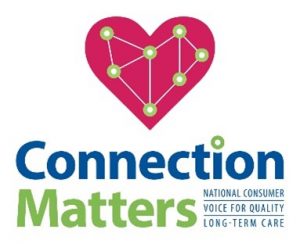Visitations to Nursin g Homes and Adult Care Homes
g Homes and Adult Care Homes
On October 16, 2020, the NC Department of Health and Human Services released new guidance on visitation, communal dining and indoor activities for larger resident settings. The guidance outlines criteria for allowing indoor and outdoor visitation, as well as compassionate care visits. As long-term care facilities ease into visitations, more and more families are finally able to see their loved ones after a long 7 month wait. Facilities are required to begin visitation but advised to have outdoor visits where practical. Indoor visits are allowed under more specific guidelines. These guidelines include having no new onset of COVID-19 cases in the last 14 days and the facility is not currently conducting outbreak testing.
Reconnecting residents with their families is a high priority of the Ombudsman Program. Visitation should be person-centered, consider the resident’s physical, mental, and psychological well-being, and support their quality of life. It is important to recognize that facilities must adhere to strict guidelines to prevent the spread of COVID. You will need to contact the facility to learn about their policies and to schedule your visit. The following is what you can expect when visiting a facility:
- Scheduled and limited visit times
- Limited number of visitors
- Temperature checks
- Questions or observations about signs and symptoms
- Required face coverings
- Social distancing at least six feet
- Staff supervision of visits (privacy should be allowed unless there are significant concerns about lack of adherence to infection prevention protocols)
- Visitors who are unable to adhere to requirements above should not be permitted to visit or should be asked to leave.
Even if indoor and outdoor visits are suspended due to COVID-19 status, compassionate care visits must still be allowed. Compassionate Care Visits are not just “end of life” visits. These visits are recommended to help residents facing hard situations, such as major upsets or end of life. These visits should not be routine. They should be allowed on a limited basis, as an exception to restricted visitation. Also, in addition to family members, compassionate care visits can be conducted by any individual that can meet the resident’s needs, such as clergy or lay persons offering religious and spiritual support.
If a visit meets the definition of compassionate care, the facility must make the visit possible. Examples of compassionate care visits include but not limited to the following:
- A resident, who was living with their family before recently being admitted, is struggling with adjustment.
- A resident who is grieving after a friend or family member recently passed away.
- A resident who needs cueing and encouragement with eating or drinking, previously provided by family and/or caregiver(s) and is experiencing weight loss or dehydration.
- A resident, who used to talk and interact with others, is experiencing emotional distress, seldom speaking, or crying more frequently
All visits should be conducted using social distancing; however, if during a compassionate care visit, a visitor and facility identify a way to allow for personal contact, it should only be done following all appropriate infection prevention guidelines. This includes providing access to appropriate PPE and limiting the amount of time of contact. Through a person-centered approach, facilities should work with residents, families, caregivers, resident representatives, and the Ombudsman program to identify the need for compassionate care visits. Caring is the act of one who cares while compassion is deep awareness of the suffering of another, coupled with the wish to relieve it. If you have any questions about visitation or concerns regarding the care of someone in a long-term care facility, contact your Ombudsmen, Angelia Pridgen or Colby Smith at 1-800-824-4648.
